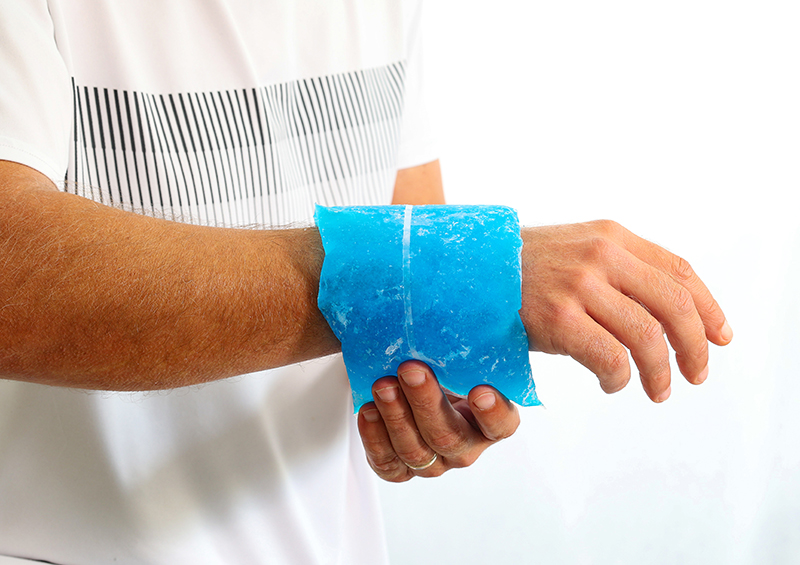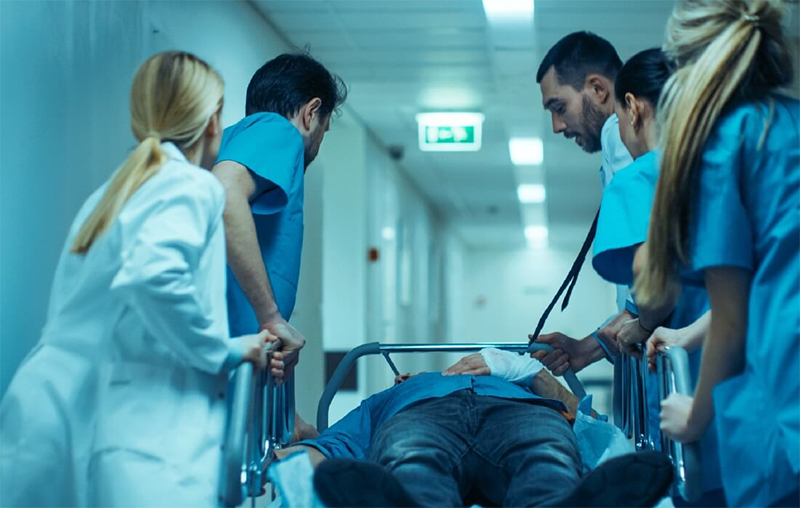Suffering a dog bite can be an upsetting experience. Knowing what to do in the immediate aftermath is essential for your safety and well-being. Let’s discuss the essential steps to take right after a dog bite incident.
- Prioritize safety for yourself and others around you.
- Use clean, warm water and mild soap to gently wash the dog bite wound.
- If the wound is bleeding, use a clean cloth or sterile bandage to apply gentle pressure and stop the bleeding.
- To reduce swelling and pain, you can apply a cold pack wrapped in a clean cloth to the area for 10-15 minutes.
- Once the wound is clean and the bleeding has stopped, cover it with a clean, sterile dressing or bandage.
- Seek medical help regardless of the severity of the dog bite.
- Report the dog bite incident to the relevant authorities.
- Consult with a personal injury attorney to understand your legal options and seek justice under the law.
Ensure Safety
After a dog bite, ensuring safety should be the top priority for the victim. This is because a second attack can occur if safety measures are not taken. Dog behavior can be unpredictable, so it is required to exercise caution and follow certain guidelines.
To ensure safety, it is important to assess the situation. If the dog that bit you is still present, try to move to a secure location, away from the dog. Seek help from others nearby if necessary. [1]
Wash the Wound After a Dog Bite
After experiencing a dog bite, one of the first steps you should take is washing the wound properly. This is important for reducing the risk of infection. To wash the wound, begin by using soap and warm tap water. Gently scrub the area to remove any dirt, debris, or bacteria that may be present.
Ensure that all traces of dirt or saliva are removed. By doing so, you can minimize the chances of infection. You can dab on an antibiotic ointment to further kill any lingering germs.
Remember to wash the wound gently to avoid causing any additional pain or irritation. If the wound is deep or bleeding heavily, it is advisable to seek medical attention immediately.

Stop Bleeding
After a dog bite, one important step in providing immediate care is to stop the bleeding of the wound. To do this, you will need a clean cloth or sterile bandage.
Applying direct pressure to the wound helps to control bleeding and minimize the risk of further complications. Place the clean cloth over the bite wound and apply firm, steady pressure. This helps to promote clotting and reduce blood flow.
If the bleeding is severe or doesn’t stop after applying pressure for several minutes, the best thing to do is to seek immediate medical attention. Other signs that indicate the need for urgent medical care include deep wounds, especially if they are located on the face or hands.
Control Swelling
After a dog bite, it is important to take steps to control swelling as part of the initial care. Swelling can occur due to the body’s natural inflammatory response to the injury. In some cases, excessive swelling can lead to pain, discomfort, and difficulty in moving the affected area.
To control swelling, there are a few simple yet effective measures that can be taken. One method is to apply an ice pack wrapped in a cloth to the affected area for about 10-15 minutes. The cold temperature helps to constrict blood vessels and reduce inflammation, thereby minimizing swelling. Ensure that the ice pack is not directly applied to the skin, as this can cause frostbite.
Elevating the wound can further help reduce swelling. Elevating the affected area above the level of the heart allows gravity to assist in reducing fluid buildup and promoting drainage. This can be done by propping up the injured limb using pillows or cushions.

Cover the Wound
After a dog bite, it is important to cover the wound to protect it from further contamination. This step is required to prevent infection and promote proper healing.
To cover the wound, you will need a sterile bandage. Before applying the covering, make sure to wash your hands thoroughly with warm soap and water to minimize the risk of introducing bacteria.
Position the sterile bandage or clean cloth over the bite wound, ensuring that it completely covers the area. If using a sterile bandage, follow the package instructions for proper application.
To secure the covering, you can use medical tape or another appropriate adhesive material.
Seek Immediate Medical Help
If you have been bitten by a dog, it is necessary to seek immediate medical help. Dog bites can cause serious injuries and carry the risk of infection. The first step is to clean the wound thoroughly with mild soap and warm tap water. Gently remove any debris or dirt from the area.
After cleaning the wound, it is important to assess its severity. Deep or gaping wounds, uncontrollable bleeding, or injuries that involve nerve or tissue damage require immediate medical attention. If you have a compromised immune system or if the dog is a stray or unknown, seek prompt medical care.
Medical professionals will evaluate the bite and determine the appropriate medical treatment. This may include prescribing antibiotics to prevent infection and administering tetanus shots if needed. They can also provide advice on how to care for the wound at home to speed up the healing process.

Report the Incident
Reporting a dog bite incident is important for both your own safety and the well-being of others. By reporting the incident, you contribute to the prevention of future incidents and ensure that appropriate actions are taken.
The first step is to note the location and appearance of the dog. Take note of any distinguishing characteristics such as breed, size, color, and any visible tags or collars. This information can be helpful in identifying the dog and its owner.
Contact your local animal control or the relevant authorities in your area. Provide them with an accurate description of the incident, including the date, time, and location.
When reporting the incident, be prepared to provide any additional information that may be necessary, such as the circumstances surrounding the incident, any witnesses, and details about the dog’s behavior or any signs of aggression.
Seek Justice
Remember to utilize the available legal resources, educate yourself on the dog bite laws in your state, and seek the guidance of a knowledgeable dog bite lawyer to protect your rights and seek the justice you deserve.
Goldberg & Loren law firm provides comprehensive information for victims of dog bites in all 50 states. This law firm offers guidance and free consultation for those seeking justice after a dog bite incident.

FAQs
Yes. Laws regarding dog bites vary by jurisdiction, but you may have the right to compensation for your injuries. Consult with a dog bite lawyer to understand your legal options.
Reporting the incident to animal control or local authorities is important for public safety. It helps to track aggressive dogs and ensure they receive appropriate control measures or behavioral training.
Reporting the incident is still important for tracking the dog's behavior and vaccination status. Discuss the situation with the dog owner, as their homeowner's insurance may cover your medical expenses.
Yes, there are several preventive measures. These include avoiding unfamiliar or aggressive dogs, not disturbing dogs while they're eating or sleeping, and teaching children how to safely interact with dogs.
Depending on the circumstances, financial assistance may be available. This could include compensation through the dog owner's homeowner's insurance or a personal injury lawsuit. Consulting with a legal professional can help you explore your options.
Yes, dog bites carry a risk of infection. Watch for signs of infection, such as redness, swelling, discharge, or increased pain. If these symptoms occur, seek medical attention promptly.
While not all dogs with rabies show symptoms, signs may include aggression, foaming at the mouth, and erratic behavior. If you suspect a dog has rabies, do not approach it. Instead, contact animal control or local authorities immediately to report the incident.
Remember, this FAQ section is designed to provide general information and should not replace medical or legal advice. It is always recommended to consult with a medical professional and a dog bite lawyer to get personalized guidance based on your specific situation.
Source:
[1] How to Treat a Dog Bite in Five Steps | Banner Health. (2022, August 16). How to Treat a Dog Bite in Five Steps | Banner Health. https://www.bannerhealth.com/healthcareblog/better-me/follow-these-5-steps-to-treat-a-dog-bite

